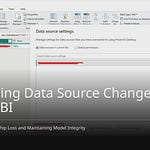You might think making cool data dashboards is the main point of looking at data. But just showing pictures often isn’t enough. These dashboards can put data together, yet they might hide important details, leading to incorrect conclusions. High-Value Analysts work differently. They aim to fix business problems and make a real difference, not just display data. Starting with a dashboard often doesn’t work well. Tools are not as important as smart thinking; you need a good way to solve problems. This approach provides actionable insights and measurable results.
Key Takeaways
High-value analysts solve business problems. They do not just show data. They make a real difference for their company.
Dashboards alone are not enough. They can hide important details. They often make you react to problems after they happen.
The LEAD framework helps analysts. It guides them to find problems. It helps them pick key numbers. It helps them build good solutions and designs.
Analysts must tell clear stories with data. They should give clear advice. This helps people make good choices and take action.
Show how your work helps the business. Measure the money saved or earned. This proves your value to the company.
Dashboard-First Pitfalls
Information Overload
You might think more data is always better. But too many dashboards cause “information chaos.” You see many numbers and charts. It is hard to find what is important. Key facts can be missed. This happens when you are in a hurry. This causes big mistakes. It makes things work poorly. You waste time looking through extra stuff. You should focus on clear signals. This confusion makes you slow. It stops you from acting fast. Many data dashboards show “vanity metrics.” These numbers look good. But they do not mean much. They fill up your screen. They do not help you act. They do not match your company goals.
Missing Business Context
A big problem with starting with a dashboard is missing business context. You see numbers and trends. But you often do not know the full story. For example, a dashboard might show fewer customers. But it rarely tells you why. Was it a new rival? Was it a product problem? Did feelings in the market change? Without this key information, you cannot make good choices. You need to know “why” things happen. This helps you use the “what” you see. No story means you guess. This stops you from fixing main problems.
Reactive Insights
Also, only using dashboards makes you react a lot. You find problems after they happen. Your insights are about the past. They show what already happened. This means you mostly fix problems. You do not stop them before they start.
Reactive insights from dashboards show old and current data. They help manage business now. They show what is needed now. They look back at what happened. They are made when problems already exist. Tools like business intelligence platforms give these insights. They help you know what to do. This helps you reach goals now.
This reactive way stops you. It keeps you from planning your business future. You just watch past events. You do not guide future success. You need to do more than react to data. You must use plans that look ahead. This lets you change what happens.
The High-Value Analyst’s LEAD Framework
You need a good plan. It helps you go past simple reports. The LEAD framework helps you become a high-value analyst. This plan guides you. It goes from finding problems to making good designs. It makes sure your work helps the business.
Landscape: Problem and Impact
Do not think about charts yet. First, you must find the business problem. You need to know its real effect. This is the “Landscape” step. You start by finding the main problem. Or you find a chance to do better. You set clear goals. You also set what you expect to happen. You also learn about the situation. You learn what people need. You learn about any limits. You decide how to tell if your work is good.
A strong way to find problems helps a lot. It finds key goals. The business wants to find these. You look at all the work. You look at business goals. You learn what information people want. You figure out what kind of study is needed. Last, you decide what you will deliver. This careful process stops confusion. Everyone knows what the problem “is.” They know what it “is not.” This helps the team work together. Everyone works for the same clear goals. It also controls the work size. This stops wasting time. It stops wasting money on things that do not matter.
Next, you figure out how big the problem is. Imagine delays cost your company $200,000. You must show this money loss. This makes the problem real. You can start by gathering what you know. You give scores. These are based on how likely it is. They are also based on the effect. This gives you a quick risk list. As you learn more, you can break down losses. You can use ranges or situations. You separate risks. You use how much money they might cost. For example, you might show big losses. These are over $100,000. You might also show small problems. You link these rules to business reasons. This helps you know the real cost of the problem. Then you show your answer. You explain how it helps the business. You show how it saves money. Or it makes new chances. For example, your answer might save $180,000. This is in the next three months. This shows clear value.
Essential: Key Metric Selection
You found the problem. Now, pick the right numbers. This is the “Essential” step. Do not just put random numbers. Do not put them on your dashboards. Instead, pick numbers. They must truly help the business.
First, help find the North Star metric. This is the most important thing. Your business tries to make it better. For a software company, this might be Monthly Recurring Revenue (MRR). This number matches what customers value. It shows your product plan. It also shows early signs of success. For example, a business software company might track. They track “Trial accounts with >3 users active in week 1.” This shows early value. It shows a chance for future sales.
Next, find what drives this North Star metric. If MRR is your North Star, its drivers could be more sales. They could be new customers. They could be how many customers leave. More sales show if old customers buy more. New customers show growth. How many customers leave shows who stops buying. These are the things you change. They help your North Star.
Finally, find diagnostic metrics. These go deeper. They tell why drivers act as they do. For new customers, these might be how many people buy. Or how well ads work. For customers leaving, you might track how often they use your product. Or customer complaints. These numbers help you know what makes the business move.
You can check your chosen numbers. Ask a strong question. “What would you do differently if this number changed?” If a business leader cannot answer, you track a useless number. If they can answer, ask: “What could I add? It would give more meaning. It would make this number even more useful for you?” This makes the number more valuable. Good key performance indicators match goals. They are Specific. They are Measurable. They are Achievable. They are Relevant. They are Time-bound (SMART). They also include important people. Limit their number. This avoids too much information.
Architecture: Solution Design
The “Architecture” step is about building your answer. You show you can do the work. You show your technical skills. You do not just talk about tools. First, you explain the situation. Then you describe the problem you had. You tell how you fixed it.
Imagine a lot of data. It makes your model slow. You start by explaining this. You describe slow pictures. You describe a heavy model. Then, you talk about your fix. You might have seen that users only needed data. They needed it from the last two years. This was for most choices. So, you built a rolling model. This model only uses the last two years. It sums up the data. You do math on this summed data. This makes the model faster. Updates happen quicker. Pictures load much faster.
You think about many ways to fix problems. For example, you might pick a rolling model. Or you might keep all seven years of data. You talk about the choices you made. Maybe you gave up old data for speed. This shows your technical choices. You also explain how the business got better. Did your fix lead to faster choices? Did it make things work better? For example, picking technology. You pick it based on what your team knows. This might make work faster now. But it might not work well later. Or it might not be the best fit. First, you must set the scene. Then you talk about the problem. Last, you explain how you fixed it.
Design: Visual Effectiveness
“Design” is the last step. You care about content. You care about fixing problems. You do not care about how pretty it looks. You know a CEO cares about business growth. They do not care about chart colors. Your design must look good. It must be easy to read.
You follow the CRAP rule. It helps with good design:
Contrast: Make important things stand out. Use different font sizes. Or use different colors. This makes people look at key numbers. It is a clear choice. It guides attention.
Repetition: Make things look the same. If you show a bad number in red, use red for all bad numbers. This makes your data dashboards match. Users quickly see patterns.
Alignment: Put things in neat rows. Line up charts. Line up tables. Line up text boxes. This makes the dashboard look better. It looks more professional.
Proximity: Put related things together. Keep a filter next to the chart it changes. This makes the dashboard easy to use. Users easily see how things connect.
Beyond CRAP, focus on how things look. Put important numbers at the top. Trends go in the middle. Details go below. This guides where people look. Use the same colors. This makes it easier to read. Also, tell a story with data. Each picture answers a question. Remove things you do not need. Remove gridlines. This makes it clear. Pick the right chart. Pick it for your data. This stops wrong ideas. Do not make pictures too fancy. Too many colors or complex charts make it hard to understand. Also, do not trick with scales. Do not trick with axes. Wrong scales twist data. Make sure axes start at zero. This stops wrong ideas. Also, think about color blindness. Use color with words. Or use patterns. This helps everyone.
Telling Stories with Data
You have data. You have numbers. Now, tell a good story. Your brain likes stories. It remembers them better. Stories help you learn. They make you act. Data stories turn hard facts into tales. These tales help you learn things. They help you make choices. They make people act. They help people who don’t know much about data. They help them see what data means.
Problem and Fix Stories
Tell your findings as a problem and a fix. This makes your work strong. Start with a clear problem. Or ask a question. For example, slow facts cost your company $200,000. Then, show how your work fixes this. Think of a story. It has people. It has a place. It has a fight. It has an end. Your data gives facts. Your work helps understand. The story links these. Pictures make it clear. Background explains things. How you tell it makes it heard. This helps you talk better. It makes sure people get what data means.
What Your Audience Needs
Change your facts for your audience. Different people need different things. Find out who you are talking to. Use studies or surveys. Learn what they need. A marketing boss needs different facts. A money boss needs other facts. Make special messages for each group. Use clear, easy words. Don’t use hard words. Use short, active sentences. This makes sure everyone gets your facts. You can show your facts. Use slides. Use active dashboards. Or use pictures. A good dashboard helps you look at data. It helps you see data over time.
Giving Clear Advice
Your work must lead to clear advice. This advice helps make choices. It turns data into actions. Give clear steps from your work. For example, sales are down. So, tell them to change marketing. Your advice should fix problems. It should make choices better. Make sure it fits goals. It should also be flexible. You can change plans. Do this with new data. Clear advice helps your team. They make good choices. This makes things work better. It gets better results.
Showing Business Impact
You must show your work’s true worth. This means proving how your analysis helps the business. You do more than just show data. You become a key partner.
Measuring Value
You need to measure money impact. First, say what “success” means. Find all ways your data helps. Direct help is when your project causes a result. Indirect help is when your project aids other tasks. These tasks then get better results. Success can mean more sales. It can mean better work. It can mean happy customers. It can mean a better company name. You must think of all ways data projects help.
To measure this, set goals early. Set Key Performance Indicators (KPIs). Do this before you start tech work. Make your projects match clear goals. These goals can be saving money. They can be making more money. Start with quick wins. Show early success. Do this in three to six months. This builds trust for bigger projects. Use many ways to measure. Mix money numbers. Use Net Present Value. Use other signs too. These signs include faster choices. They include better guesses. Watch early and late signs. Watch how many people use it. Watch data quality. These are early signs of future impact. Money results are late signs.
Changing Decisions
Your data analysis can change how a company decides things. For example, a factory used data. They cut costs by 15% in one year. A health group made patients better by 20%. They used better data. Cleveland Clinic used smart guesses. They cut patient wait times by 15%. Target used computer rules. They guessed what people would buy. This made profits go up by 10%. Macy’s used smart tools. They made holiday sales go up by 20%. General Electric (GE) used data for its workers. They cut project times by 25%. These examples show how data helps leaders. They make better choices.
Beyond Just Tools
You get long-term good things. This happens when you stop just thinking about tools. Focus on fixing problems first. This way makes decisions better. It leads to answers that work now. They also work later. It makes you ask questions. It makes you try new things. You can guess long-term results. You can guess unexpected results. This changes how you fix problems. You go from reacting to planning. You stop future problems. This way helps you change. It helps you think deeply. It values different ideas. It builds strength. This comes from always learning. You bring different views together. This makes everyone understand. It helps teamwork. It makes sure answers work. This planning mind helps you avoid problems. It leads to stronger answers. You go from just fixing problems. You go to stopping them. This is the true power of business intelligence.
True value comes from solving problems. It is not just showing data. The LEAD plan helps you. It makes you a key partner. You go past simple dashboards. High-value analysts look at the whole picture. They pick key numbers. They build strong systems. They make useful designs. This turns data into real results. High-value analysts use this way. They boost their impact. They help their company a lot.
FAQ
What makes a high-value analyst different?
You fix business problems. You make a real impact. You do not just show data. You help make big choices. This makes you a key helper.
How does the LEAD framework help me?
The LEAD plan guides you. It helps you find problems. You pick important numbers. You make good solutions. You create clear pictures. This makes your work show real business worth.
Why are dashboards not enough for true business value?
Dashboards often show too much. They miss key business facts. They make you react late. You need to solve problems. This turns data into smart plans.
How can I ensure my analysis drives action?
You must tell a good story. Talk about the problem and your fix. Change facts for your audience. Give clear advice. This helps people make smart choices. 🚀









